Seafood enterprises in Queensland’s Mackay region are finding new ways to add value to consumer experiences and community wellbeing
Story and photos by Melissa Marino
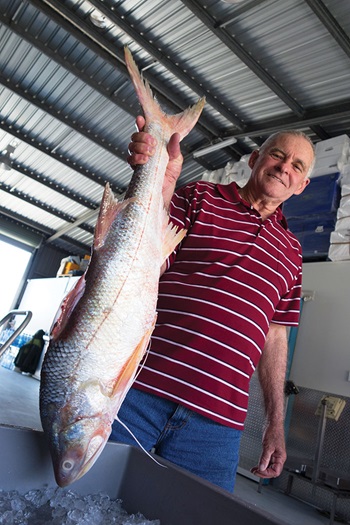
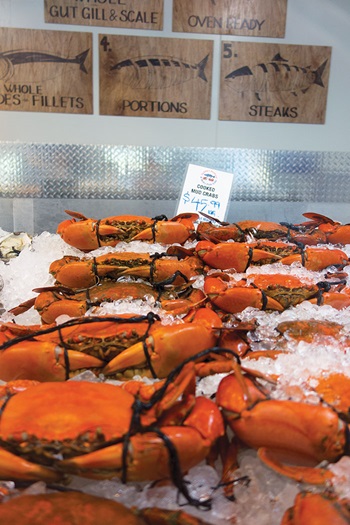
Mackay, sitting midway between Brisbane and Cairns, is a city of more than 120,000 people in the heart of sugarcane and cattle country.
Offshore lies the lower end of the Great Barrier Reef and a wealth of marine resources, including fresh local fish for locals and visitors alike.
With 320 kilometres of coastline in the Mackay local government area, fishing is a crucial part of the regional economy. But assessing the value of the sector has often been difficult, particularly in a region where farming and, more recently, mining, have dominated the economic horizon.
A Queensland research project sponsored by the FRDC and published in 2016, Beyond GVP: The value of inshore commercial fisheries to fishers and consumers in regional communities on Queensland’s east coast, suggests the gross value of production (GVP) of commercial fisheries represents only a third of their value to the state’s regional communities.
Either side of effort to catch fish – the basis for GVP – are the benefits to those who supply the sector, and the multiplier effect of fisheries-related income circulating in the local economy.
At the end of 2014, the world coal price plummeted and Mackay Mayor Greg Williamson says the local resources sector “fell off a cliff”. Not long after, commercial fishing effort in the immediate Mackay vicinity was also reduced, making the efforts of those who continue to supply fresh regional seafood of even greater value.
The two main seafood wholesalers and retailers in Mackay are Mackay Reef Fish Supplies and Debbie’s Seafood.
David Caracciolo at Mackay Reef Fish Supplies says the sector contributes a lot to the local economy: “The fuel suppliers, packaging, marine outfitters, the groceries for fishers going out, the ice suppliers, even the laundries that wash all the gear – it all filters through,” he says.
While David Caracciolo’s business also trades out of Darwin, Debbie’s Seafood, owned by Debbie and Mark Ahern, has a more fiercely local focus.
Debbie Ahern started selling her seafood catch from the back of her Chrysler car 16 years ago, largely as a ploy to get off the fishing boat she and her husband operated at the time.
“If we didn’t fish we didn’t get paid, so we were often out in huge waves and it was scary and physically it was very hard,” she says. “So I said to Mark, ‘You catch it and I’ll sell it’.”
That decision to market their own fish led to the creation of Debbie’s Seafood, which now operates a fleet of six trucks – mobile seafood retail outlets that supply freshly caught fish to thousands of people in the region, many of whom live hundreds of kilometres from the coast.
While Mark Ahern still tries to fish whenever he can, the success of the business means he is more often in the office, sourcing product from other fishers up and down the coast.
In addition to their retail trucks, the Aherns have a newly constructed wholesale and retail outlet adjacent their latest venture, Deb’s Fish Cafe. Demand means the Aherns need more seafood than
Mackay fishers alone can provide, and so they source product from up and down the coast.
Today their business employs 35 people and Mackay Regional Council’s economic modelling estimates it contributes $13 million to the local economy.
As with other operators in the sector, the ripple effect spreads from their business to others and into the broader community. At a grassroots level, this includes sponsorships to community groups and sporting teams, or discounts to help schools put seafood on their menus.
“It’s like a spider web,” says Mark Ahern of the interdependence of diverse businesses. “There’s a massive branch of businesses that rely on us – and we rely on them as well.”
Mayor Greg Williamson says the Aherns have had a significant impact in the community, particularly in the wake of the mining downturn, which slashed local jobs and confidence. “The trickle-down effect is immense,” he says.
In fact, the Aherns used one of the sector’s biggest challenges – a change in government fishing policy – as an opportunity to expand their business, going against conventional wisdom.
Queensland’s fisheries managers created net-free fishing zones in Mackay in 2015. The resulting ‘marine haven’ has proven attractive for the recreational fishing community but it also reduced the commercial catch from the immediate area.
However, as the Beyond GVP research showed, local people are prepared to pay a premium of 10 per cent or more for fresh, local fish. Similar socioeconomic research in NSW has shown that eating fresh seafood is viewed as part of the tourist experience when visiting coastal communities (see ‘Beyond the Catch’, FISH December 2016).
Recognising these trends ahead of any official research, the Aherns decided to expand in the wake of the fishing net bans. They made a $1.5 million investment in a new warehouse for their wholesale and retail business, and opened Deb’s Fish Cafe, which has allowed them to employ an additional 10 staff.
Destination seafood
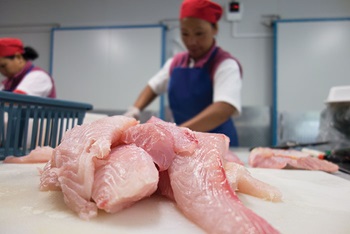 Beth Moore works the filleting station at Debbie’s Seafood in full view of customers.
Beth Moore works the filleting station at Debbie’s Seafood in full view of customers. 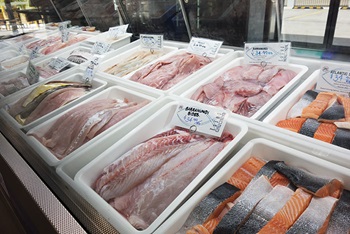 Locally caught fishand produce sourced from further afield is on offer at Debbie’s Seafood.
Locally caught fishand produce sourced from further afield is on offer at Debbie’s Seafood. 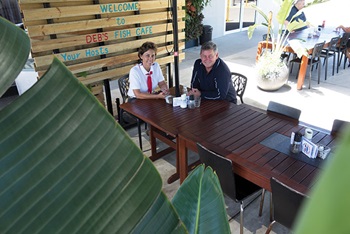 Debbie and Mark Ahern say the alfresco dining area at Deb’s Fish Cafe is a big drawcard.
Debbie and Mark Ahern say the alfresco dining area at Deb’s Fish Cafe is a big drawcard.The Aherns’ new retail outlet and Deb’s Fish Cafe are located deep in the backblocks of an industrial zone at Slade Point – hardly a place you would expect to find a bustling food business.
But, despite limited passing trade, that is exactly what the Aherns have created. “We are a destination,” Debbie Ahern says. “People come.”
One of the drawcards – as is often the case when the fishmongers bring out their knives – is the spectacle of filleting the catch.
At the cafe customers relax in a dining area full of tropical plants and can see locally caught fish filleted and cooked before their eyes. “It’s like the theatre, and people love it,” she says.
Beth Moore is a lead player in that “theatre”. She is one of five employees who specialise in filleting fish – sometimes up to 500 kilograms a day – in full view of customers. Despite the workload, she says she never tires of the fresh product she prepares for hungry diners. “I love seafood; I could eat it every day.”
Debbie Ahern describes the filleting station as the “engine room” of the business, and one of its most popular attractions. Fresh fillets are cooked in the cafe, stocked in the retail shop for immediate sale, loaded into the trucks and sold to restaurants and fish and chip shops or frozen for storage.
Mackay Regional Council Deputy Mayor Amanda Camm says Debbie’s Seafood and Deb’s Fish Cafe have generated a buzz for the community and enhanced the town’s liveability credentials. Debbie’s Seafood was also a winner in the Queensland Seafood Industry’s 2017 Large Business Award and a finalist in the national competition.
“To have that kind of dining experience with the product and service they deliver in a quirky and unique location – it’s critical for people who live here as well as for visitors,” she says.
Amanda Camm, who is also a director of Mackay Tourism Ltd, says fresh seafood is “completely aligned” with the ‘Nature. Reserved.’ campaign promoting nature-based experiences in the region – a campaign that helped increase international tourism to the region by five per cent in 2017.
The success of the cafe has meant more employment opportunities too – for cooks, waiters and retail staff, and extra juniors around Christmas and Easter.
“We keep expanding,” says Debbie Ahern, who has a retractable roof for the cafe and cooking classes on the agenda. “And I think it’s because we listen to what people are telling us.”
For instance, Mark Ahern noticed an increasing Indian population in the region, and began cutting fish into ‘steaks’ straight across, with the bone and skin intact – a style preferred in Indian cuisine.
“They sell out every time we put them up,” he says.
“It’s amazing how it all evolved,” says Debbie Ahern, remembering the couple’s early days fishing from a ‘tinny’ and “sleeping on the beach being eaten alive by sandflies and mosquitoes”. And how, based on demand, the business grew truck by truck. “I would have been a bit overwhelmed if I’d had known what it would be like today.”
Finding the fish
Mackay fisher Dave Daniel considers himself lucky that he has had a regular buyer for his catch over many years. It makes a tough job a lot easier, he says.
As an estuary fisher, he usually heads out for 24 hours at a time on his four-metre punt, delivering fish such as Barramundi, King Salmon and Grunter two or three times a week.
He says Debbie and Mark Ahern take whatever he catches at a fair price – an approach stemming from their own start as fishers.
“They take cheaper varieties as well as the more expensive ones, so I’m never stuck shopping around trying to get rid of something; it’s much easier for me,” he says. “It’s a very long-term, trusting relationship.”
Doug and Terri Robke also supply seafood markets in Mackay, as well as exporting live reef fish, mostly to Hong Kong. They employ six full-time staff who fish for two to three weeks at a time, up to 100 kilometres offshore, and who rely on regular buyers for their living.
Sourcing fresh local fish has become increasingly challenging as commercial fishing effort moves further from Mackay.
Debbie Ahern says ongoing relationships with fishers are crucial in providing a consistent supply of fresh product to their customers at Debbie’s Seafood, although she never knows exactly what mix of fish there will be in each delivery.
Business supplies
Brendan Jones, wholesaler
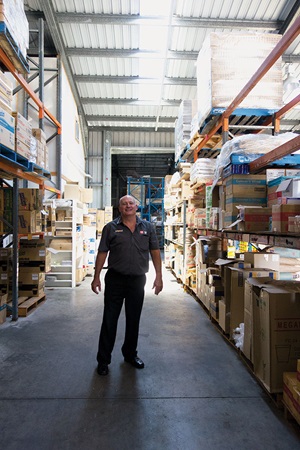
For locally owned businesses, success is built on relationships with other businesses and community organisations, says Suncrest Food Distributors owner Brendan Jones.
The Mackay-based wholesaler has more than 400 clients, including many in the retail and hospitality sector who supply seafood to the local community and as part of the ‘visitor experience’.
Supplies to these customers include a wide variety of goods from chips and breadcrumbs to foil and clingwrap, even notepads for waiters.
He says if clients feel well served, they are likely to stay loyal. And in an environment where family-owned businesses such as Suncrest are competing with multinationals, good service is a key point of difference.
In turn, the success of Suncrest enables it to support local schools and the sporting club playing in the Mackay rugby league competition.
“The sporting club is a good customer of ours and we help out where we can,” Brendan Jones says. “We do a lot with school fetes and other sports like netball and lawn bowls ... we share the love around.”
Icey innovation
Francis Vigliante, ice-maker
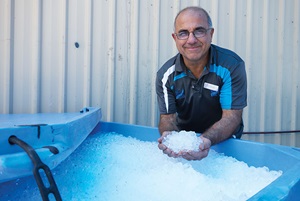
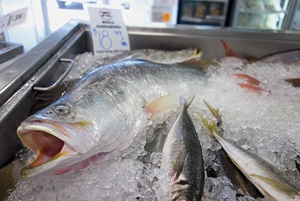
In 2016 Francis Vigliante, at Mackay’s Blue River Ice, invested $30,000 in a new ice-crushing machine. It was a big outlay, but worth it for his seafood customers. The machine, he explains, efficiently crushes ice to a smaller size, ideal for seafood. “The bigger the ice, the more it damages the product,” he says.
It also works alongside an ozone filtration system that pumps oxygen through the water as it is frozen to kill bacteria, a process that helps extend seafood shelf life.
In any given week, local seafood businesses Debbie’s Seafood and Mackay Reef Fish Supplies buy up to 25 500-kilogram bins of specially crushed ice. And, at that rate, the crusher will quickly pay for itself.
Professional fishers are also an important client base for Blue River Ice, both for crushed ice and the standard tube-based product, popular also among recreational fishers and sold bagged up through retail outlets, including the seafood companies themselves. In total, the commercial fishing and seafood industry accounts for up to 25 per cent of Francis Vigliante’s business, which produces 35 tonnes of ice per day.
Keeping community together
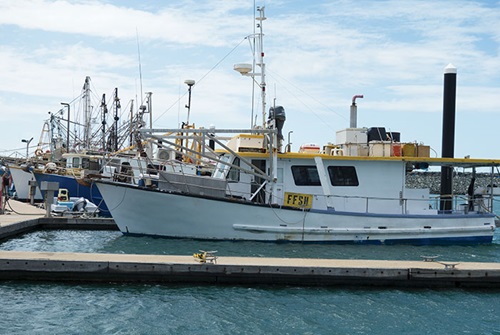
The flow-on effects of successful fisheries businesses contribute to improved community wellbeing in diverse spheres
The small town of Dysart has been hit hard in recent times. About 250 kilometres south-west of Mackay, it was built in the 1970s to service nearby mining operations. So when the mining downturn hit, it hurt.
“We’ve had a few hard knocks, with people moving away and the mine closing,” says Melissa Macklin, a photographer and Dysart resident, whose husband Shaun works in the mining sector. “We lost shops and families and the town has been struggling.”
A highlight on the local calendar each year is the National Rugby League Masters Carnival, a chance for old friends and their families – many of whom have been forced to move away for work – to reconnect.
“It’s so important that we can get people together to have a bit of fun,” says Melissa Macklin, also manager of the Dysart Bulls Masters team, which includes her husband, a father and son, two sets of brothers and players aged in their sixties. “I think for some people it’s the highlight of the year.”
Making their participation in the Gold Coast carnival possible, she says, are sponsors, which include Debbie’s Seafood and Blue River Ice. They pay for the team’s registration and uniforms, which are colour-coded according to age. “So if the old fella’s in the gold shorts, no one can tackle him,” she explains.
Seafood vouchers also help with fundraising to pay for food and drinks during the masters carnival. “Without the help of our sponsors we wouldn’t have a team and we wouldn’t be part of it,” she says.
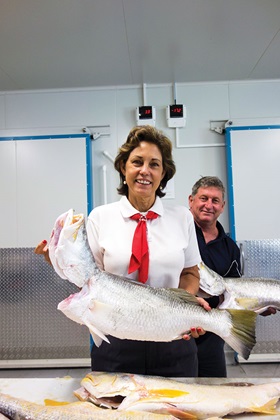 Debbie and Mark Ahern from Debbie’s Seafood.
Debbie and Mark Ahern from Debbie’s Seafood.Debbie’s Seafood fresh fish outlet
- 35,000 customers at the Slade Point Debbie’s Seafood retail outlet each year
- 600 kilograms of fish and 250 kilograms of fresh local cooked prawns sold each week
Deb’s Fish Cafe
- 1000 weekly customers
- 700 pieces of fish and 150 kilograms of chips cooked each week
Debbie"s Seafood vans
- 20,000 customers annually
- 750 kilometres per week travelled
- 350 kilograms of fish and 350 kilograms of fresh local cooked prawns sold each week
See also
FRDC Research Codes: 2013-301, 2014-301





